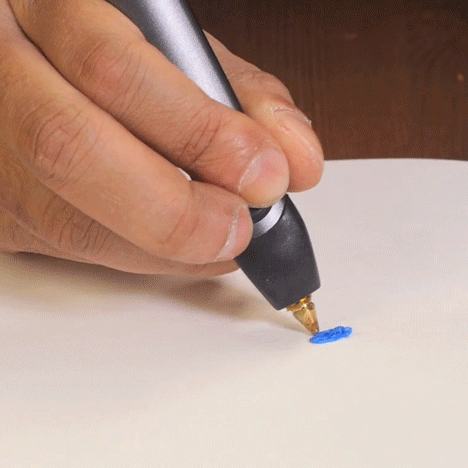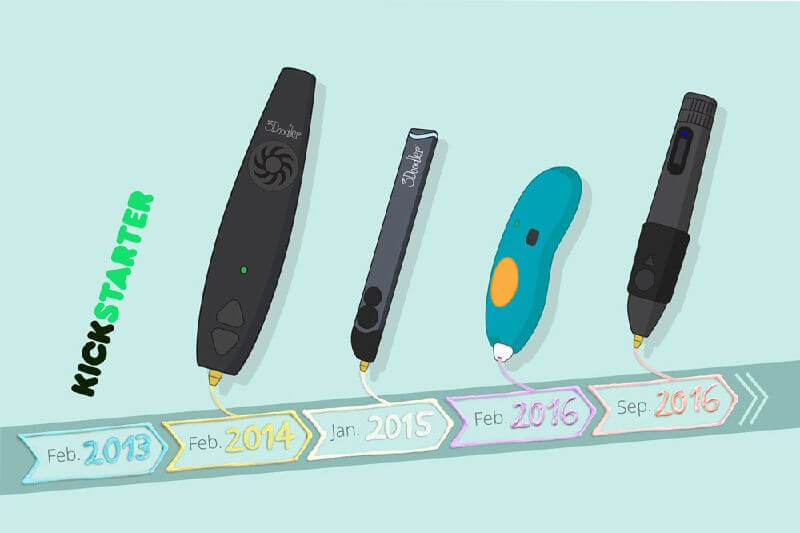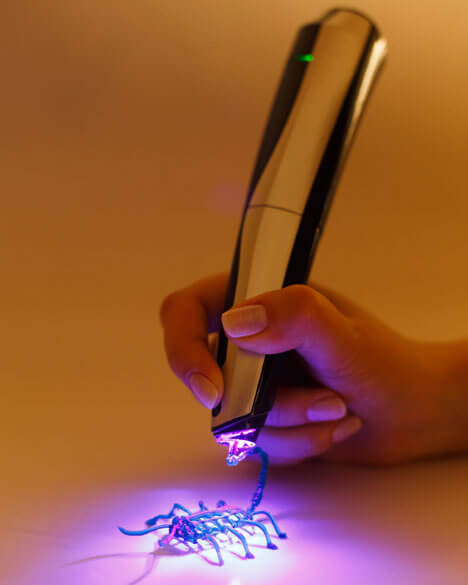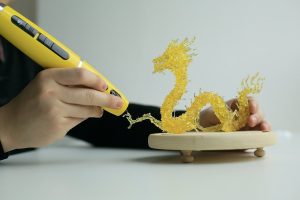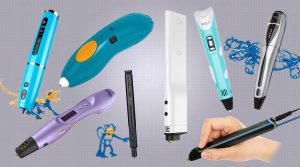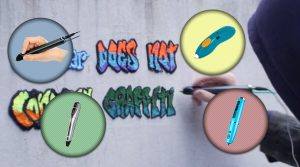What are they?!
At first sight, these cool new toys look like “pens that allow you to draw up in the air”.
Now, leaving the hype behind and coming down to Earth, we’ll see that they actually work by extruding heated plastic that cools almost instantly into a solid, stable structure, allowing for the free-hand creation of three-dimensional objects. They utilize plastic thread made of either acrylonitrile butadiene styrene (“ABS”), polylactic acid (“PLA”), or “FLEXY”, thermal polyurethane (“TPU”) that is melted and then cooled through a patented process while moving through the pen, which can then be used to make 3D objects by hand. They have been described as “glue guns for 3D printing because” of how the plastic is extruded from the tip, but the creative experience is completely different than that of a glue gun: rapid cooling of the filament coupled with auto-extrusion make it possible to actually use these things to draw!
History
The cool new toy that is taking the world by surprise was born back in 2012 at the (in)famous Artisans’ Asylum, a makerspace in Massachusetts. Maxwell Bogue and Peter Dilworth were prototyping new toys. This was a slow and tedious process with the 3D printers that had access to back then, and after wasting 14 hours because the printer has missed a line in one of their prototypes they wished they “could just take the nozzle off the 3D printer and fill in the missing gap”, they wished they had something like a 3D pen! So they took the 3D printer nozzle out, hooked it out to the components it needed to work alone, and they had the first ancestor of their “3d pen”.
From then on, it wasn’t hard not to notice the creative potential of the new toy: it was obviously much more than a 3d-printed-models-repair tool. You could fucking draw up in the air with it, what could be cooler than that?
To raise money for actually making this into a real toy / gadget that other regular people could buy and play with, they started a wildly successful Kickstarter campaign in 2013 that exceeded their initial goal of $30,000 (it ended up raising $2.3 million!). No wonder it, did, with such a cool video like this:
In 2015, they raised another $1.4 million to create their 2.0 version. And the saga continued, with the first 3Doodler pen being followed by 3Doodler 2.0 and the 3Doodler Create (looking almost the same but with improved reliability), while separate R&D efforts created the kid-friendly 3Doodler Start and the advanced 3Doodler Pro targeted at serious artists and professionals:
…while on parallel tracks, the competition was busy copying, but also improving their design. The competitors arose, with three successful generations of Chinese-made pens evolving to better and better shapes:
The ones you see above are sold under the more reputable brand Scribbler (with its current Scribbler V3 enjoying great success even among the more “pro” users due mainly to its versatility), but variations of them, probably with slightly cheaper components and less responsive customer support are sold under tens of different “clone-brands”.
Those above might look clunky, but the latest generation seems to almost surpass the ancestors they’ve copied. Look at how sleek looking some of them are becoming to look:
The last one is one of the latest pictures of the new Scribbler V3S Nano that we haven’t tried yet, but it looks pretty slick!
The future
From what we see above one obvious direction for the future of 3D pens is miniaturization – 3D pens are finally getting close to the size of a regular ink pen!
Another one is going wireless – this is somewhat at odds with miniaturization, since batteries tend to be pretty bulky, especially at the capacity required by power-hungry molten plastic 3D pens. Check out our Wireless 3D pens – spring 2017 article exploring the latest developments in this direction.
But a different breed of 3D pens, the newly appeared “cool ink” photopolymer ones, have a much easier time being wireless. These use a special polymer resin that hardens when exposed to UV-light (from the tip of the pen). Currently there are only a few pens using this technology on the market, the most notable of them being the “developed in Siberia” CreoPop 3D Pen.
In the future we imagine a great big fight between molten-plastic and photopolymer 3D pens!

